Maintaining top cleanliness and safety levels is of utmost importance in today’s highly dynamic food industry. One of the most critical methods to ensure that merchandise from harmful microorganisms is free is using food sterilization equipment. This blog post aims to take you through some of the leading suppliers of food sterilization equipment by highlighting their innovative solutions and advanced technologies for different processing needs. Consequently, being aware of available options can help you make good choices that suit your demands best, boost efficacy, and comply with rules set by authorities in the field of operation. In this regard, it is essential to understand the key players in this sector before concluding which avenues are most favorable for your food security practices.
What is Food Sterilization, and Why is it Important?
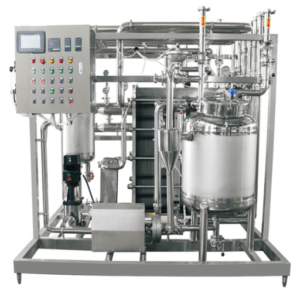
Image source: https://www.ndpac.com/
The food sterilization process entails eliminating or reducing dangerous microorganisms such as bacteria, viruses, and fungi from food items, making them fit for consumption. This may be done in various ways, including heat treatment, irradiation, or chemical sterilization. The significance of food sterilization cannot be overemphasized: it helps prevent diseases resulting from contaminated foods, lengthens shelf life, and maintains quality and nutritional value. By using effective sterilization techniques, manufacturers can exercise high levels of sanitation needed by law, thereby protecting consumer health and earning a good reputation among other market competitors.
Understanding Sterilization in the Food Industry
Food Sterilization in the food industry is a process of getting rid of any harmful microorganisms in the food to ensure it is safe for consumption. The methods used include thermal sterilization, which exposes the product to high temperature-killing bacteria, viruses, or parasites; pressure sterilization with steam under very high temperatures that offer similar effects; and other chemicals used for disinfecting foods and their packages. According to leading food experts, these methods help reduce the risk of food poisoning associated with contamination and improve shelf life, which is critical in today’s globalized food supply chains. By choosing appropriate sterilization techniques, manufacturers meet health standards and enhance their products’ quality, which usually results in customers being loyal and trusting towards the brand.
How Food Sterilization Machines Work
Sterilizers for Food operate according to different principles to ensure that pathogens are destroyed from the substances we consume. They mostly employ thermal means referred to as pasteurizers, where they expose materials to temperatures above 100 degrees Celsius, leading to the denaturation of proteins in pathogens and, hence, their death. Machines designed specifically for this task tend to have features like accurate temperature control systems and monitors to ascertain that foods are raised above critical heat levels.
The other alternative is pressurized sterilization, such as autoclaves, where water’s boiling point increases by a considerable volume of steam pressure, making it possible to achieve sterilization at relatively low temperatures. Such devices used in chemical sterilization help disinfect surfaces on which these food items are placed before being packaged. These pieces differ in design and use; however, most work on similar principles such as maximum efficiency, minimum energy use, and constant level of safety required for preserving consumer health. By applying superior technologies, modern-day sterility units become vital elements at all stages of produce manufacturing since they conform to strict international regulations about hygiene standards within an organization.
Benefits of Using Sterilization Equipment for Food Safety
One significant advantage of using sterilization equipment in food processing is that it dramatically increases the safety of our food by reducing the risk of food poisoning. In addition, this process helps to destroy harmful organisms such as bacteria, viruses, and parasites, which can cause serious health problems if consumed. Sterilized food also has a longer shelf life because microbial growth is inhibited, thus reducing the amount of waste on our plates. Proper techniques preserve essential nutrients while eliminating spoilage organisms, improving the flavor and nutritional quality of sterilized foods. By doing so, a business complies with food safety regulations, thereby increasing consumers’ confidence levels in its products and, hence, creating better brand loyalty. The public health protection measures are more sustainable when implementing such equipment.
Types of Sterilization Equipment for Food Processing
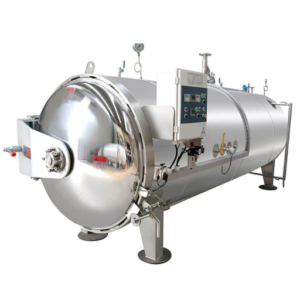
These include steam sterilizers (autoclaves), chemical sterilizers, radiation sterilizers, ozone sterilizers, and hot water pasteurizers.
- Steam Sterilizers (Autoclaves): These use high-pressure steam to kill microorganisms effectively. They are designed explicitly for heat-resistant foods and their packaging.
- Chemical Sterilizers: This type employs chemical agents like hydrogen peroxide or chlorine dioxide to disinfect handles and devices without using heat.
- Radiation Sterilizers: This utilizes either ultraviolet light or gamma radiation, which disrupts the DNA structure of pathogens thus making it an eco-friendly choice for both food items and containers used in storing them.
- Ozone Sterilizers: These use ozone gas, which has strong oxidizing properties and effectively kills bacteria and viruses without producing toxic residues.
- Hot Water Pasteurizers: These systems pass water through a set temperature range, after which it is used to heat treat liquids, especially those inside containers before consumers put them in their mouths.
Each form is critical in ensuring food safety and health compliance within the food processing industry.
Differentiating Between Water Spray and Water Immersion Retorts
The retort process for food can use either water spray or water immersion methods.
- Water Spray Retorts: These employ high-pressure water sprays to heat food products. They provide even heating through heated water flow within the system, enabling precise temperature control. This approach is preferred for bulkier and more fragile food items, where minimal harm should happen during processing, and is often more energy efficient for higher volumes.
- Water Immersion Retorts: Unlike the first ones, these are entirely submerged in hot water for a specific period of time, during which they will contact the food containers. The goal here is to achieve thorough heating and ensure product sterilization. However, that might mean more significant energy costs since all the water must be heated to temperature. The water immersion retort process is mainly used for products packed in rigid containers to ensure their pathogen-free nature by heating them uniformly.
Choosing between the two systems depends on different factors, such as the nature of the product and desired end results. Manufacturers need to select retorts that are most appropriate according to their needs and regulatory requirements.
Exploring UV Sterilization and Its Applications
Ultraviolet (UV) Sterilization is a modern technology that uses UV light to eradicate harmful bacteria from food, air, and liquid. It is also popularly used in the food industry because it effectively kills bacteria, viruses, and molds without using heat treatment or chemicals, thus preserving the quality and nutrient value of processed foods. Three main applications of UV sterilization methods include surface disinfection, air purification, and water treatment.
- Water Treatment: To provide safe drinking water, UV sterilization is increasingly being used in many water treatment plants. Exposure to UV light kills pathogens, thereby offering chemical-free disinfection methods with no residuals left behind.
- Surface Disinfection: For instance, surfaces in plants involved in food production can be treated with ultraviolet lights, thus reducing microbial load. It helps give proper hygienic conditions, thus reducing the possibility of food contamination at the point of processing and packaging.
- Air Purification: UV sterilization can disinfect air systems by killing airborne pathogens in food storage or processing areas. This ensures a safe environment for employees and extends the shelf life of foods.
Generally, UV sterilization is an eco-friendly alternative that is applicable in ensuring that food meets safety standards and complies with health regulations.
Comparing Autoclaves and Retort Machines for Canned Food
Autoclaves and retort machines are vital in sterilizing canned food, but each functions differently. The autoclave utilizes high-pressure steam to reach high temperatures that kill bacteria and spores. Its efficiency and ability to penetrate packaging and surfaces uniformly make this method effective. On the other hand, retort machines are designed specifically for the canning industry and can use steam, hot water, or dry heat to achieve the needed sterilization.
The main difference lies in their operating capacities and uses; autoclaves are usually used for smaller quantities or specific food applications, while retorts are designed for large-scale commercial purposes. In essence, many things autoclave disinfectants can be used on apart from cans, whereas retorts ensure the processing and safety of canned products. Notwithstanding, both systems have crucial roles in sustaining safe food requirements and increasing shelf life through efficient sterilization techniques.
Top Suppliers of Food Sterilizers and Sterilization Machines
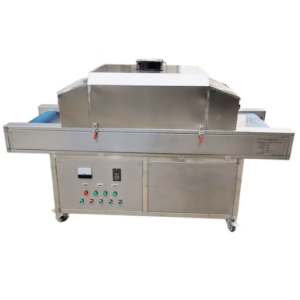
There are various reputable companies from which one can acquire food sterilizers and sterilization machines. For instance, companies like Astell Scientific and Getinge offer reliable solutions for various sterilization needs through their quality autoclaves. The company Hastings Deering has top-notch retort systems that are explicitly made for canned food processing, emphasizing effectiveness and compliance with safety standards. Besides that, Systec focuses on lab sterilizers, which enjoy a wide range of applications within food industries. Again, Alfa Laval has comprehensive, integrated systems catering to pasteurizing and sterilizing, improving food safety in mass production situations. Innovation and reliability remain at the core of these institutions, making them essential players in the market of food preservation.
Finding Reliable Suppliers for Sterilization Equipment
One of the best places to look is Thomasnet.com, where you will find a huge list of manufacturers and suppliers with detailed product specifications and customer ratings. IndustryNet.com is another trusted site that lets users compare different suppliers and get feedback from former customers, thus making it easier for them to make informed purchasing decisions. Lastly, Medicaldevice-network.com offers specialized sterilization equipment from which one can acquire relevant articles, case studies, and current market trends that show how authentic the supplier is and the reliability of their products. Utilizing these sites enables you to secure quality sterilization equipment from reputable sources.
What to Look for in a Food Sterilization Machine Supplier
Several essential factors must be considered when searching for a food sterilization machine supplier since they can affect your overall satisfaction and operational efficiency. First, ensure the supplier provides comprehensive information concerning their products, such as specifications, certifications, and conformity with industry guidelines on Thomasnet.com. It’s necessary to identify distributors with good reputations by looking at comments made by former clients through platforms like IndustryNet.com. Furthermore, it should be checked whether the seller has added value in the form of installation services, training programs, and maintenance protocols so that the buyer can maximize usage based on industry insights available at Medicaldevice-network.com. Considering these points, you can choose something suitable for your food processing requirements.
Advantages of Using Modern Sterilizer Machines in Food Processing
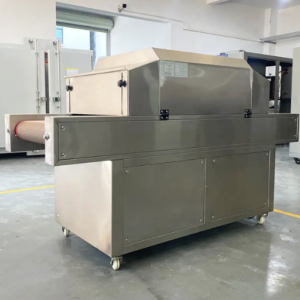
Modern sterilizers enhance food safety and processing efficiency, hence their multiple advantages. The first advantage is that they reduce microbial quantities to minimal levels, reducing the likelihood of food poisoning cases, thereby improving public health standards. They are fitted with highly advanced technology for precise temperature control and effective sterilization cycles for consistent results and better product quality. In addition, contemporary sterilizer machines have automated features that reduce human interference during the process, saving time and reducing labor costs. Moreover, these designs use less energy, thus reducing operational expenses and environmental damage, making them sustainable choices for any food processor. To sum it up, investing in modern sterilizer machines ensures maximum security and effectiveness while maintaining consumer trust in food-related products.
Efficiency and Effectiveness of Food Sterilization Machines
Efficiency and effectiveness in eliminating pathogens and ensuring a safe food supply are some of the key aspects considered by food sterilization machine manufacturers when designing them. These machines must consistently maintain temperatures and times used for killing microbiological life forms to comply with established regulations on food safety. By way of illustration, improved sterilizers have close monitoring equipment installed to achieve this throughout the procedure, significantly reducing bacterial burden.
Moreover, automation has been incorporated into several recent models of sterilizing systems to improve efficiency through reduced human errors and shorter processing times. Concerning food processing rates, some devices where disinfection is a fraction of their traditional duration raise output per unit time and substantially cut down power utilization levels. In brief, applying sophisticated methods contributes to safer foods through faster response rates, enhancing operational performance within food plants.
Streamlining Food Processing with Advanced Equipment
Sophisticated tools are crucial in making food processing procedures easy. Insights from top food processing sites reveal that automation and intelligent technology significantly increase output and reduce waste. For instance, conveyor systems with artificial intelligence algorithms can monitor the production lines in real time, allowing for the efficient movement of goods while minimizing bottlenecks.
Moreover, equipment such as vacuum packaging machines and high-speed filling systems significantly lower the risk of contamination while preserving product freshness and shelf life. These technologies not only enhance food handling practices but also ensure compliance with strict regulations on food safety. At the end of the day, adopting progressive food processing machinery enhances efficiency, leading to manufacturing excellence and cost-effective products for customers.
Enhancing Food Safety with Reliable Sterilizers
Food safety relies on dependable sterilizers that effectively remove harmful bacteria and pathogens. According to credible sources, modern methods in sterilization, such as steam, chemical, and radiation sterilization, have reasonable efficacy rates in reducing microbial contamination. Some websites dealing with food processing technologies advocate for regular maintenance and validation processes of sterilization equipment to maintain a consistent performance ability. Also, advanced monitoring systems have helped track sterilization cycles continuously, providing manufacturers with vital information needed to develop better safety protocols. Finally, investing in reliable sterilization solutions raises product safety levels while at the same time boosting confidence among consumers about the processed foods they consume.
How to Choose the Right Sterilization Equipment for Your Food Business
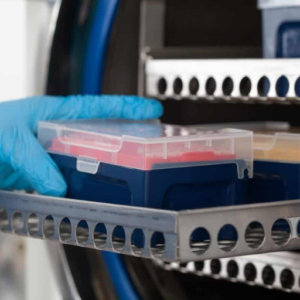
Key considerations are involved in choosing the proper sterilization equipment for food businesses. Start by assessing your operation’s specific needs, depending on the nature of the products you process and their related sterilization demands. This involves knowledge of output volumes, types of microbial threats, and regulatory compliances governing food safety. Next, efficacy, cost implications, and ease of integration into existing processes, among other things, should be assessed when selecting different ways of sterilizing. Moreover, it is necessary to consider equipment maintenance and validation requirements and the availability of vendor technical support. Lastly, ensure that your equipment has advanced monitoring systems incorporated to perform optimally while observing safety standards, enhancing consumer confidence.
Assessing Your Sterilization Needs for Different Types of Food
Special features should be considered carefully when considering product vulnerabilities and the need for sterilization for various foods. For instance, water bath canning methods may be appropriate when it comes to high-acid foods like fruits and tomatoes since these items can only be adequately processed at lower temperatures. On the flip side, low-acid foods such as meat and vegetables require pressure canning to attain the sufficient temperature needed for the elimination of harmful microorganisms. Another option is using chemical sterilization methods on heat-sensitive foodstuffs; they ensure perfect control over microbes without compromising product quality. Packaging type matters also; especially with vacuum-sealed goods, one must ensure that the method used in sterilizing penetrates properly throughout the shelf-life, thus maintaining its safety. Lastly, one must keep updated with industry regulations and standards, which would guide him/her in picking out a proper method to carry out sterilization on his or her particular food products.
Evaluating the Capacity and Features of Sterilizing Machines
When you choose sterilizing machines, it’s critical to look at their capacities and features so that they fit your specific needs. A sterilizing machine’s capacity is the amount of product it can handle in one cycle. It can range from small desktop units suitable for small operations to large industrial machines designed for high-volume production. For efficiency and cost advantage, choose equipment that matches your scale of production.
Regarding characteristics, go for machines with adjustable temperature and pressure settings, as these will allow flexible sterilization processes suited to various types of food. Some examples of advanced monitoring systems are real-time data logging and automated alerts, which make the sterilization process more consistent and reliable. Energy-saving specifications, cleaning convenience, and easy-to-use interfaces can also greatly influence operational workflows. In this case, constantly scrutinize specifications and performance data from trustworthy sources and manufacturers so that you may come to a well-considered decision that fulfills safety standards and serves your operation purposes better.
Budget Considerations for Investing in Sterilization Equipment
It is important to consider budget constraints while investing in sterilizing equipment to obtain the most value out of your money. Before anything else, you need to consider how much you will have to pay to buy the machine initially, which fluctuates with its kind and size. Although they might seem cheaper initially, small desktop models cannot handle higher production rates over time. On top of that, examine running costs, including electricity bills, maintenance fees, and consumable items.
Additionally, any unplanned downtime resulting from installation or unexpected breakdowns should be considered, as well as their consequences on efficiency and cost-effectiveness. Opt for machines made by reputable manufacturers that offer warranties and robust customer support services because this guarantees the long-term provision of after-sales services, thereby decreasing the chances of unpredictable expenses. Ultimately, alternative means of financing, such as hiring purchase agreements, should be looked into to spread the impact and influence on cash flows, segregating them from a possible slowdown in production during the decision-making process.
Frequently Asked Questions (FAQs)
Q: What types of sterilization retort equipment are available for food processing?
A: Sterilization retort equipment for food processing includes autoclave retort sterilizers, pressure steam sterilizers, and water spray sterilization units. These machines help sterilize retort packages like glass bottles and canned food.
Q: How can I determine the best machine food sterilizer for my needs?
A: To determine the best machine food sterilizer for your needs, consider factors such as the type of food you’re processing, the volume of production, sterilization time, and whether the equipment is for lab mushroom food use sterilization or for larger industrial autoclave purposes.
Q: What are the benefits of using industrial autoclave machines for food sterilization?
A: Industrial autoclave machines are efficient for large-scale food sterilization. They use high-pressure steam to ensure thorough sterilization, making them ideal for processing large batches of canned and bottled food. This ensures food safety and extended shelf life.
Q: Are there cost-effective options for food sterilization equipment in China?
A: You can find cost-effective options for food sterilization equipment in China. Many suppliers offer factory-quality machines, making it possible to get high-quality food sterilizing retort equipment without compromising on cost. You can shop at platforms like alibaba.com to find competitive deals.
Q: What should I look for when selecting food-use sterilization equipment for lab applications?
A: When selecting food-use sterilization equipment for lab applications, consider the capacity (e.g., 75L), the specific sterilization requirements for the food or mushroom samples, and the precision and reliability of the equipment to ensure consistent and accurate results.
Q: How does water spray sterilization work for food processing?
A: Water spray sterilization involves spraying hot water onto the food packages within a retort. This method ensures even heat distribution, making it highly effective for sterilizing glass bottles and various types of canned food while preserving the quality and integrity of the food content.
Q: What is the process for sterilizing milk using a UHT sterilizer?
A: Ultrahigh-temperature (UHT) sterilizers process milk by exposing it to temperatures above 135°C for a few seconds. This method effectively kills bacteria while ensuring the milk retains its nutritional value and flavor. It is a popular choice for extending the shelf life of milk.
Q: Can food machine suppliers help customize equipment for specific requirements?
A: Yes, many food machine suppliers offer customization services. They can tailor sterilization retort equipment to meet specific processing needs, such as different sizes, capacities, or functionalities required for specialized food products like those for hospital lab mushroom food use.
Q: How do I find my factory’s best food sterilization machines?
A: To find your factory’s best food sterilization machines, research and compare products from reputable suppliers. Check reviews, inquire about the factory price, ask for samples or demonstrations, and ensure the equipment meets your production and sterilization requirements.
Q: What are the critical considerations for sterilizing lab mushroom food use items?
A: Key considerations for sterilizing lab mushroom food items include selecting suitable sterilization retort equipment, ensuring the equipment can handle the specific fungal pathogens and substrates used in mushroom cultivation, and maintaining precise control over sterilization time and temperature.












